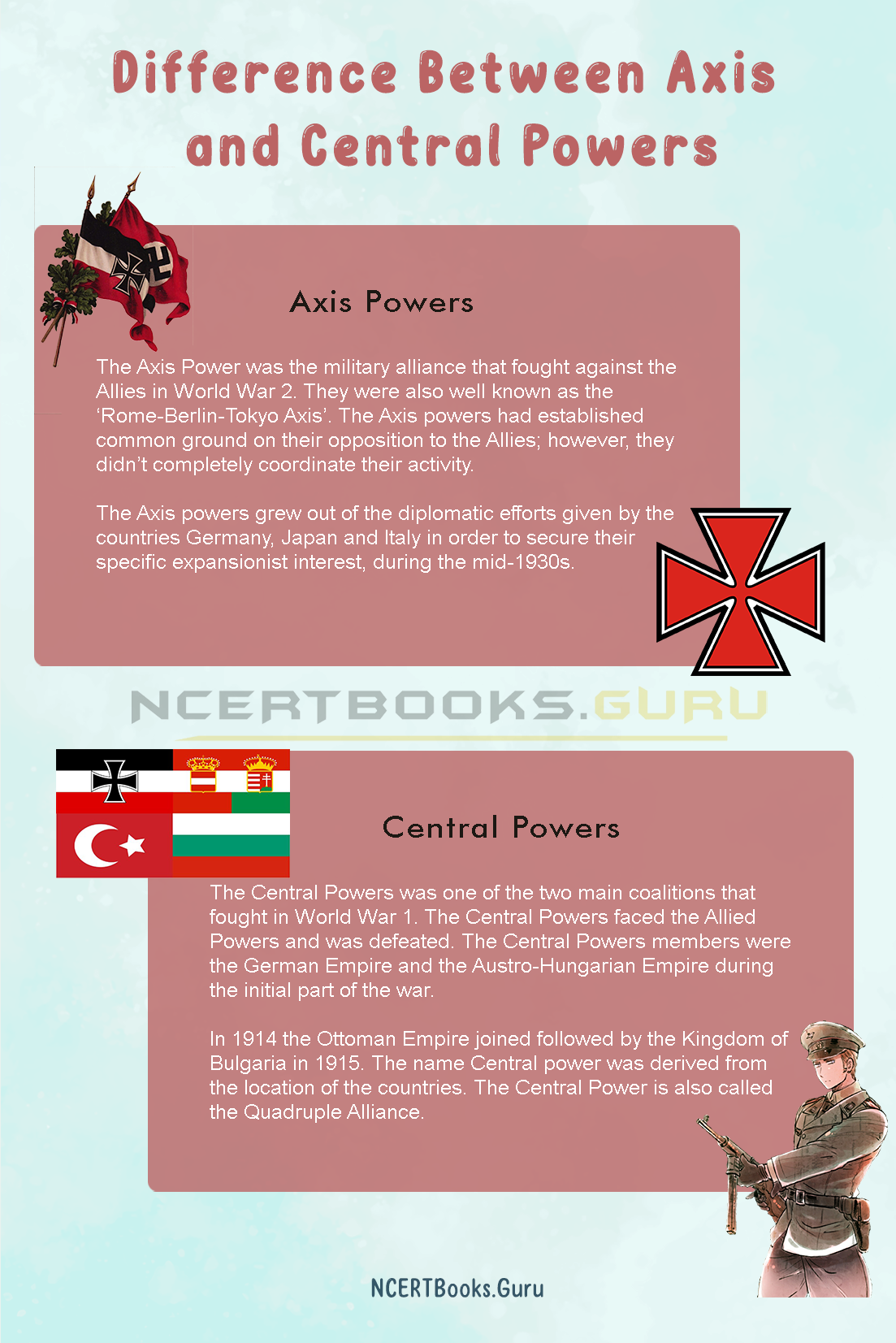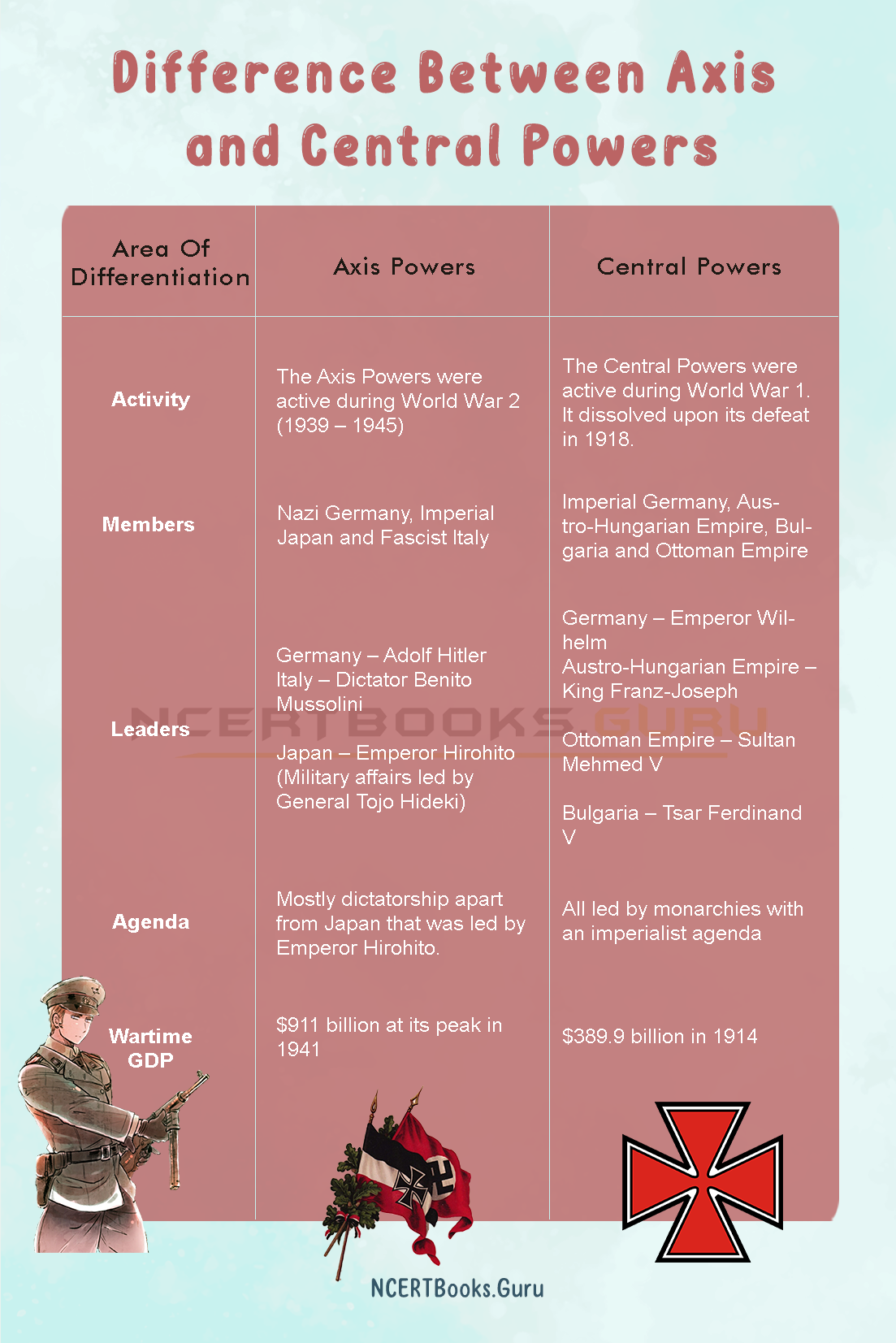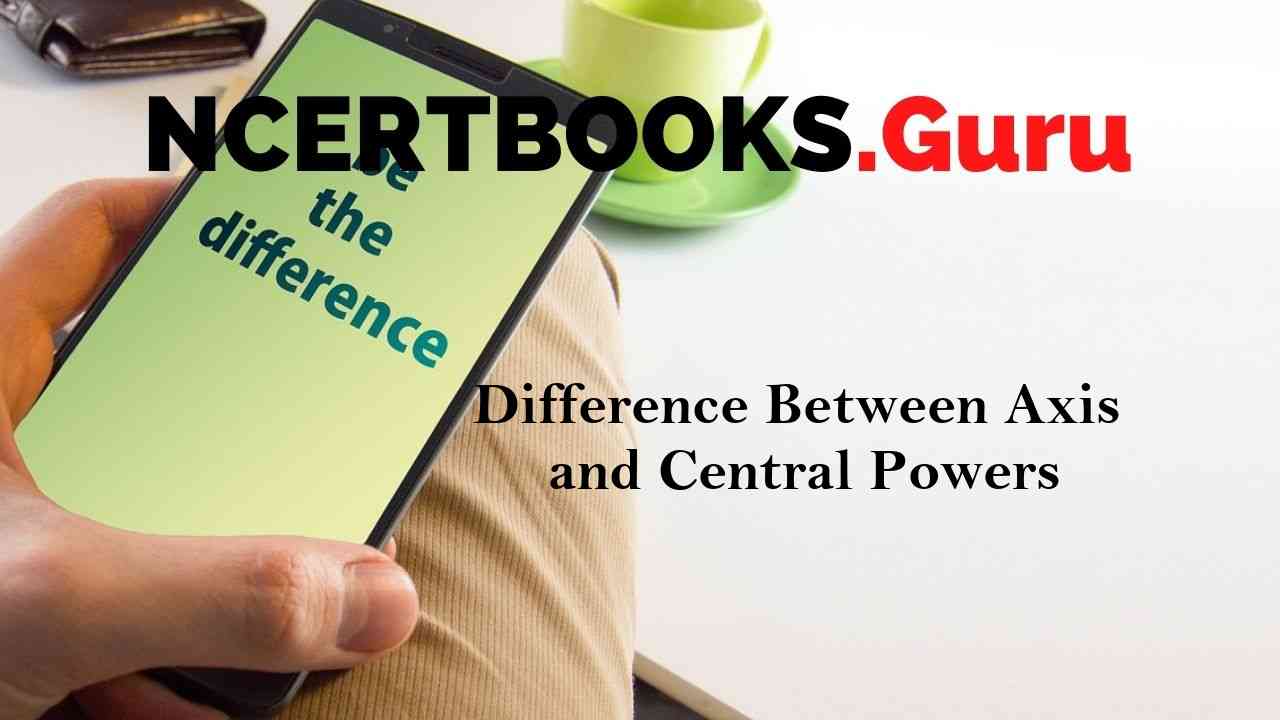Introduction
The Axis and the Central Powers were two groups who fought against the Allied powers. The Central Powers fought against the Allies in World War 1, and the Axis Powers fought against them in World War 2.
The Central and Axis Powers stayed almost similar, but the only exception was Italy and Japan moved to the Axis during World War 2.
You can also find differences between articles on various topics that you need to know. Just tap on the quick link available and get to know the basic differences between them.
What is the Difference Between Axis and Central Powers?
About Axis Powers
The Axis Power was the military alliance that fought against the Allies in World War 2. They were also well known as the ‘Rome-Berlin-Tokyo Axis’. The Axis powers had established common ground on their opposition to the Allies; however, they didn’t completely coordinate their activity.
The Axis powers grew out of the diplomatic efforts given by the countries Germany, Japan and Italy in order to secure their specific expansionist interest, during the mid-1930s.
About Central Powers
The Central Powers was one of the two main coalitions that fought in World War 1. The Central Powers faced the Allied Powers and was defeated. The Central Powers members were the German Empire and the Austro-Hungarian Empire during the initial part of the war.
In 1914 the Ottoman Empire joined followed by the Kingdom of Bulgaria in 1915. The name Central power was derived from the location of the countries. The Central Power is also called the Quadruple Alliance.

Difference Between Axis and Central Powers
|
Area Of Differentiation |
Axis Powers |
Central Powers |
| Activity | The Axis Powers were active during World War 2 (1939 – 1945) | The Central Powers were active during World War 1. It dissolved upon its defeat in 1918. |
| Members | Nazi Germany, Imperial Japan and Fascist Italy | Imperial Germany, Austro-Hungarian Empire, Bulgaria and Ottoman Empire |
| Leaders | Germany – Adolf Hitler Italy – Dictator Benito Mussolini Japan – Emperor Hirohito (Military affairs led by General Tojo Hideki) |
Germany – Emperor Wilhelm
Austro-Hungarian Empire – King Franz-Joseph Ottoman Empire – Sultan Mehmed Bulgaria – Tsar Ferdinand |
| Agenda | Mostly dictatorship apart from Japan that was led by Emperor Hirohito. | All led by monarchies with an imperialist agenda |
| Wartime GDP | $911 billion at its peak in 1941 | $389.9 billion in 1914 |

Similarities of Axis and Central Powers
- The Axis and the Central powers fought against the Allies in World War 1 and World War 2 respectively. The Allies consisted of – Great Britain, France and the Russian Empire during World War 1 and during World War 2, the main Allied powers were France, Great Britain, the United States, China and the Soviet Union.
- Germany remained common as part of the Axis powers as well as the Central powers during World War 2 and World War 1 respectively.
- The Central and Axis Powers were defeated by the Allied Powers in World War 1 and World War 2 respectively.
Frequently Asked Questions on Difference Between Axis and Central Powers
Question:
The Axis power was led by whom?
Answer:
Germany, Italy and Japan were the main Axis powers. The Axis powers’ main leaders were Adolf Hitler of Germany, Emperor Hirohito of Japan and Benito Mussolini of Italy.
Question:
Why did the Central Powers lose World War 1?
Answer:
The Central Powers lost World War 1 due to a failure in tactics, a new enemy that entered during the end of the war, and finally starved into submission by their enemies.
Question:
What was the common agenda of the Axis and Central powers?
Answer:
Both the Axis and the Central powers had expansionist agendas as the expense of other nations.
